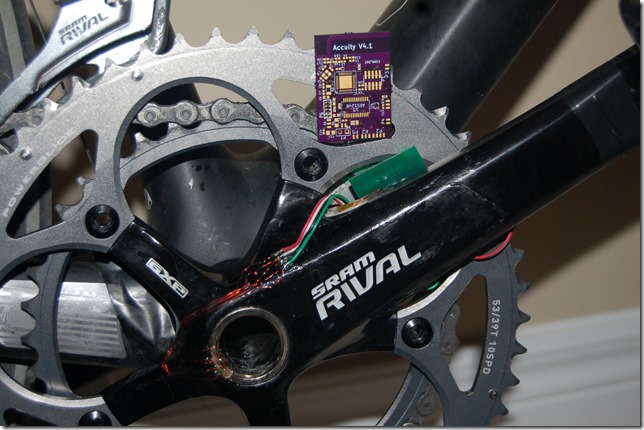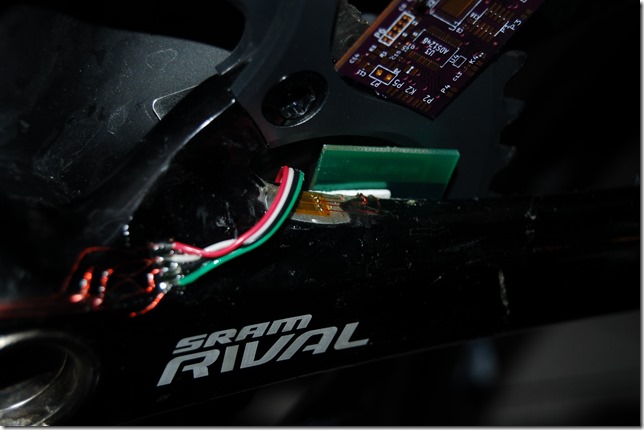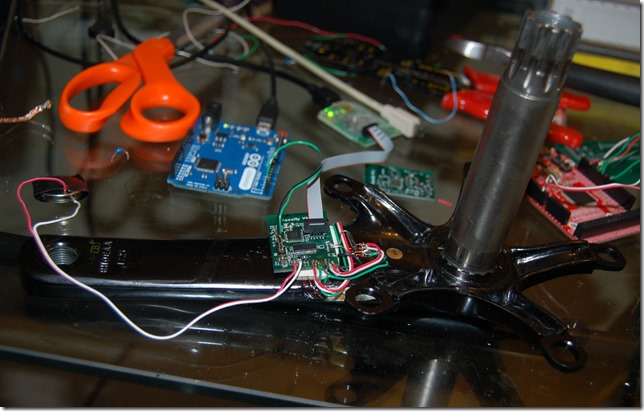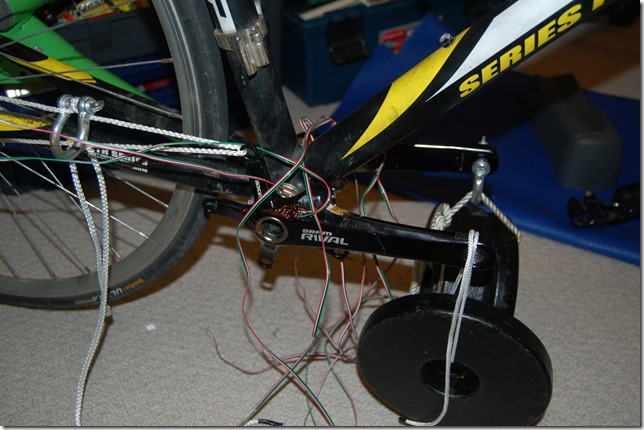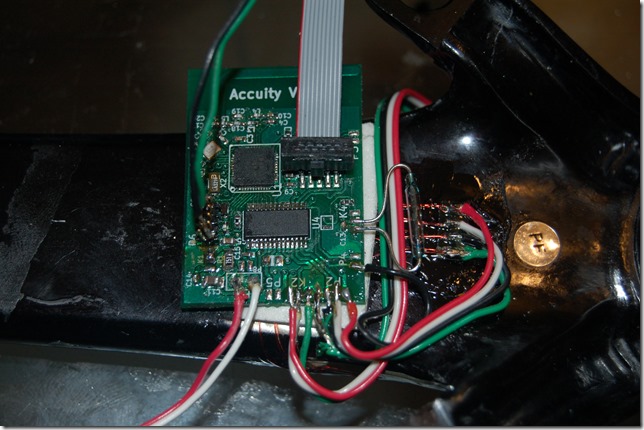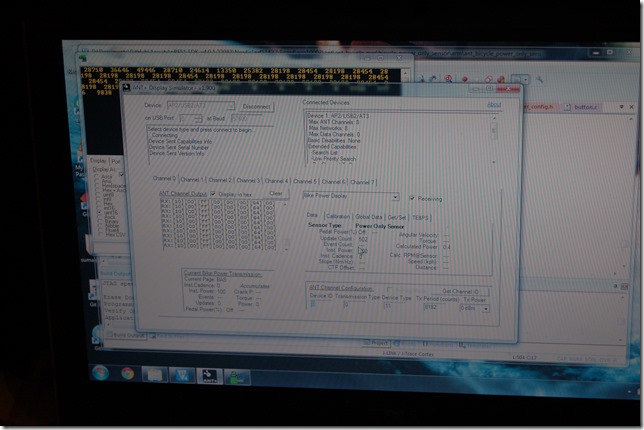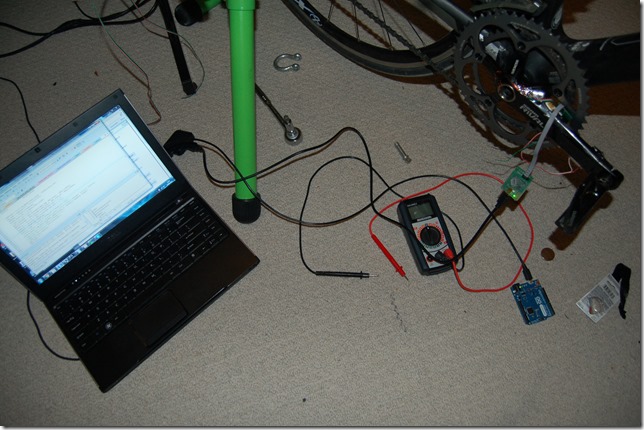
On August 12, 2012 I made the first post on my blog (here) which was a recap of an old site I was working on over a year earlier. I was interested in a powermeter but as a Masters student it was too expensive so I became curious. I had been using my Kurt Kinetic trainer with a regressed power curve as a training tool. After talking to a coach about my training software and potential development (virtual coach) using regressed power curves I can rightly say I was very discouraged from pursuing anything further. A combination of lack of time, thesis, training for triathlons, looking for a job, and that small advice from the training community led to shelving the project. I should note that my local bike shop in NL (here) was quite supportive. Below is what I’ve called V1 now, or version 1, which never had a dedicated circuit board.

Next came V2 out of my curiosity for strain gauges which continued. It used a similar arrangement for the strain gauges as V1, but now it was a full bridge rather than half bridge. This is important as I now understood more about how sensitive the wheatstone bridges are to temperatures. I demoed this shortly after building at the startup accelerator Communitech to one of the coordinators, but honestly it didn’t go well. The problem is a lack of experience plus it really wasn’t ready for prime time. It was hard to setup, get working, and keep working and transmitting well.
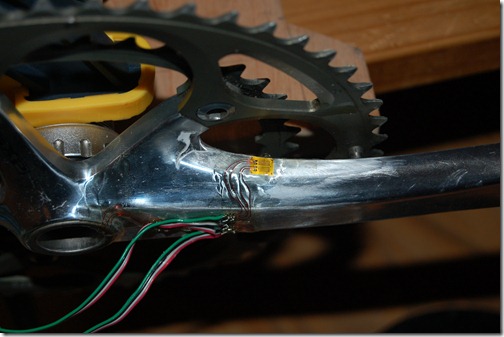
This lead me to develop V3. V3 had the exact same electronics but it fixed several problems. The biggest being that an antenna in the axle doesn’t transmit well and running wires through it was a terrible idea. So instead of a bending bridge arrangement for the left arm, I used a double shear gauge inside the axle. It worked great, but V3 was huge and prevented me from running in the 53t ring safely without damaging the circuit board and connections. Major shortfalls include power consumption and noise on the ADC.
And so V4 is born. I switched to a different microcontroller, the new nRF51422, which allowed me to drop the power consumption and move to a one chip design (microcontroller and RF transceiver in one chip). Combined with a new, lower noise (but slower) ADC called a Sigma-Delta rather than the Successive Approximation Register (SAR) ADC but it kept the power in check all with more noise free bits. I built a reflow oven, and learned a lot about RF (and I still know very little), but after a second attempt at a circuit board (V4.1) I was successful. I had named this version Accuity which took me ages to come to. I think it conveys the precision of the unit with the double c’s to remind that it measures two legs.

I’ve spent a lot of time getting this working in a table top debug form, and slowly transferring it to a bike crank. I am low on strain gauges so I decided to reuse the instrumented crank from V3. You can see the programmer hanging off it above. The programming cable can’t be removed without removing the chain ring which is another mistake to be rectified further down the road. After hours of debugging and rewriting the de-bounce filter for the magnetic switch, I found out that I had accidently been sending “Power_L” over ANT+ and not “Power_T”. I had previously been debugging something and it required that I simplify things, but I forgot to revert the code. I’m ready to move on to the next phase of testing on my bicycle trainer and……..FULL STOP.
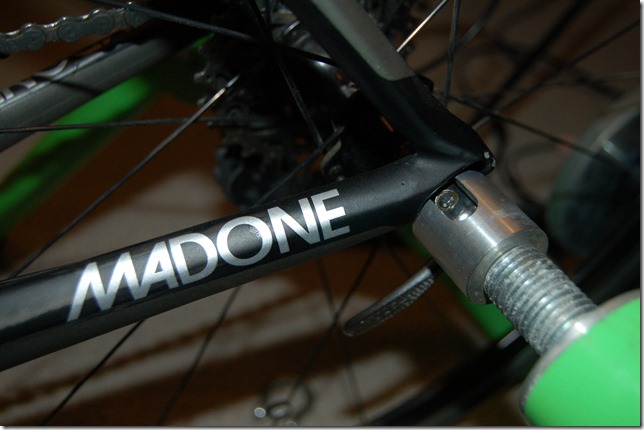
It’s hard to tell from the above picture, but the cup that holds the skewer cannot clear the area around it. Thus I can’t test it inside! I’m willing to tighten it to the point I can turn 60 – 70 watts by hand, but I don’t dare put my weight on the frame. I just bought this frame recently, and I don’t want to damage it.
This means that I can only “test” it outside, but I can’t compare its data with anything. The plan was to regress a power curve myself on the kinetic and switch out to the prototype and regress another curve and see how they line up. My other option is to rent a powertap again, but this is a 200km round trip to London Ontario. The final option, and possibly cheapest is to get another cassette and a derailleur to setup my old GT Series 4 such that I can ride it as a single speed on the trainer. More money is required to solve all problems.
